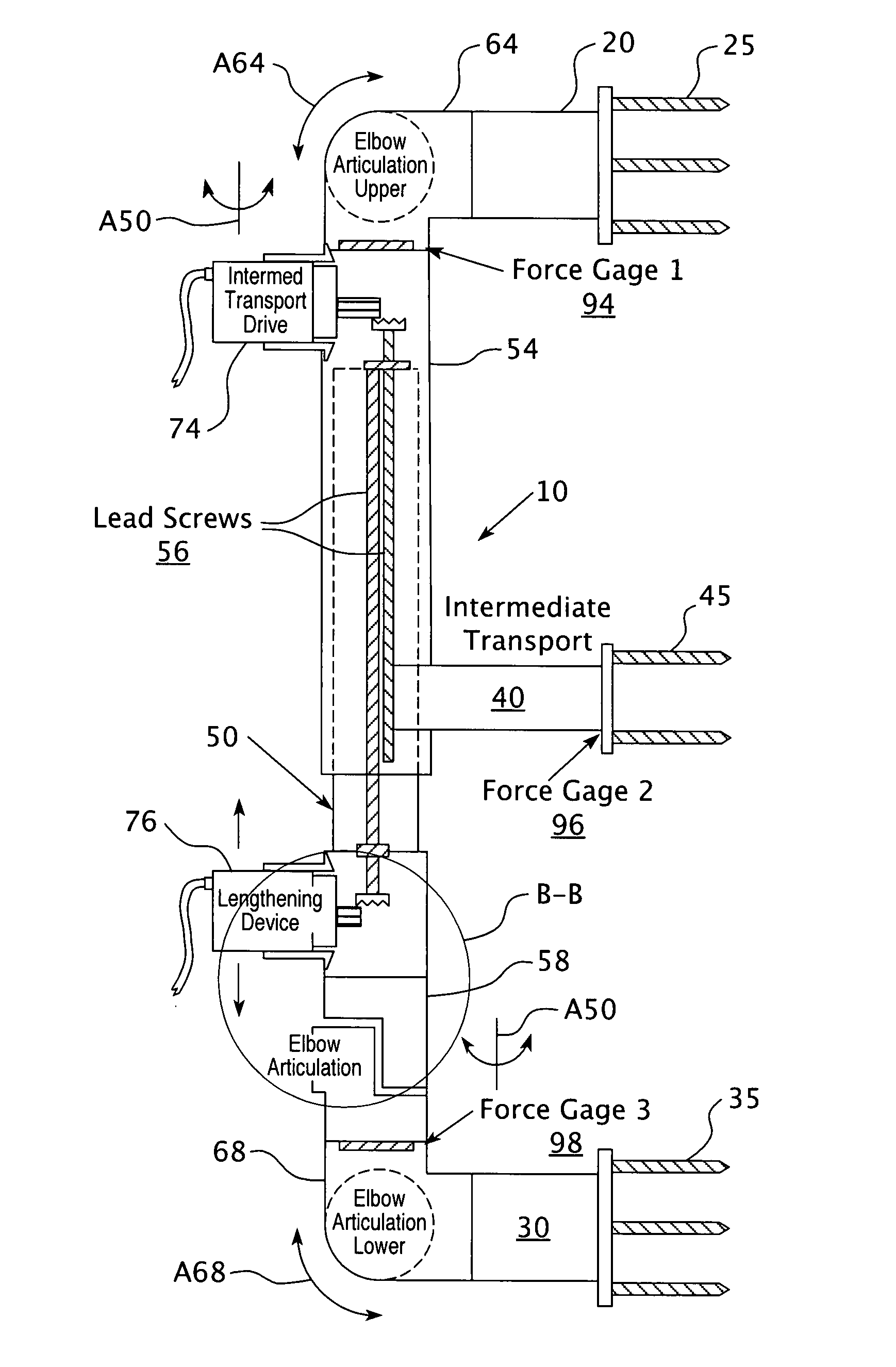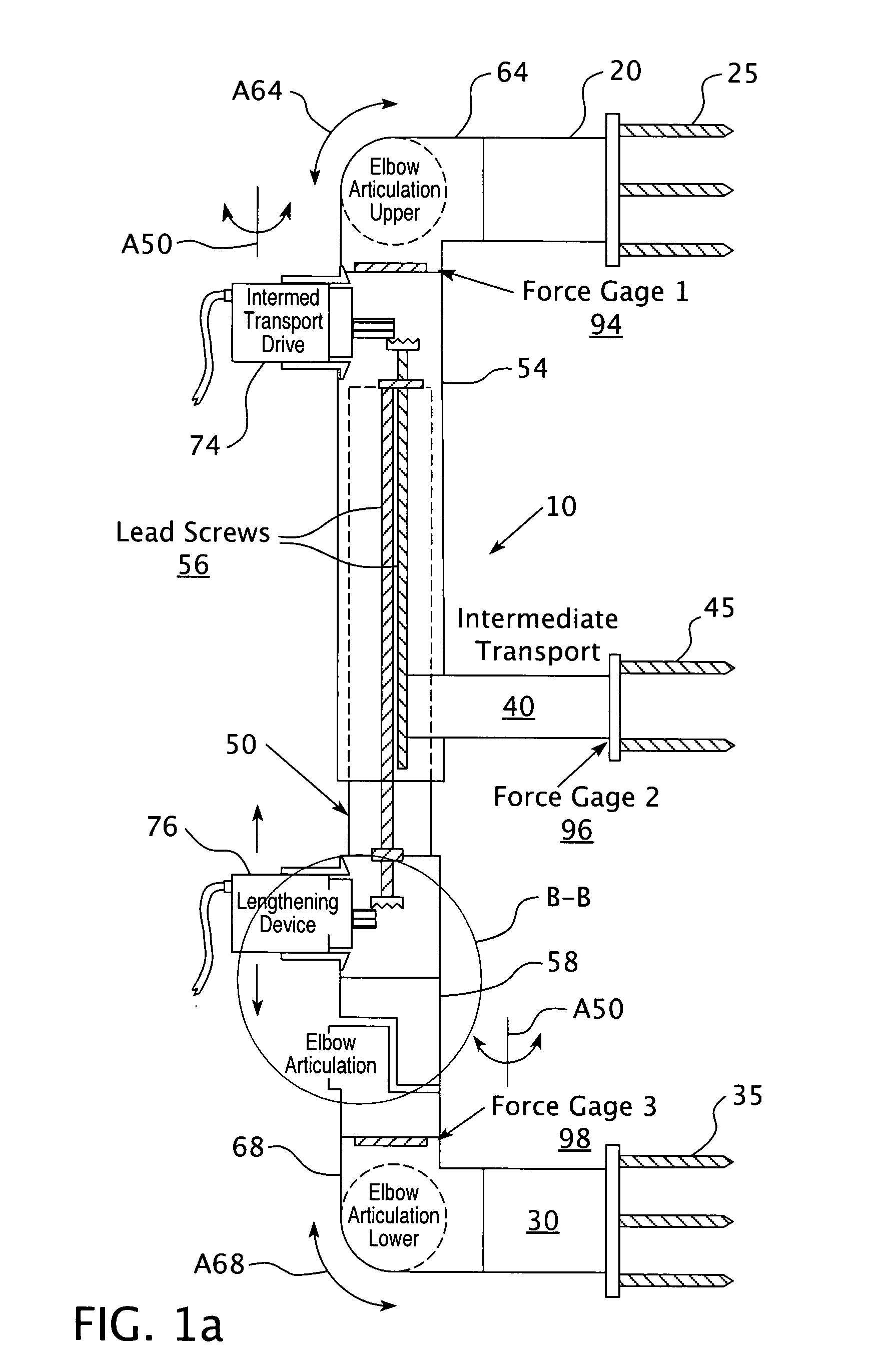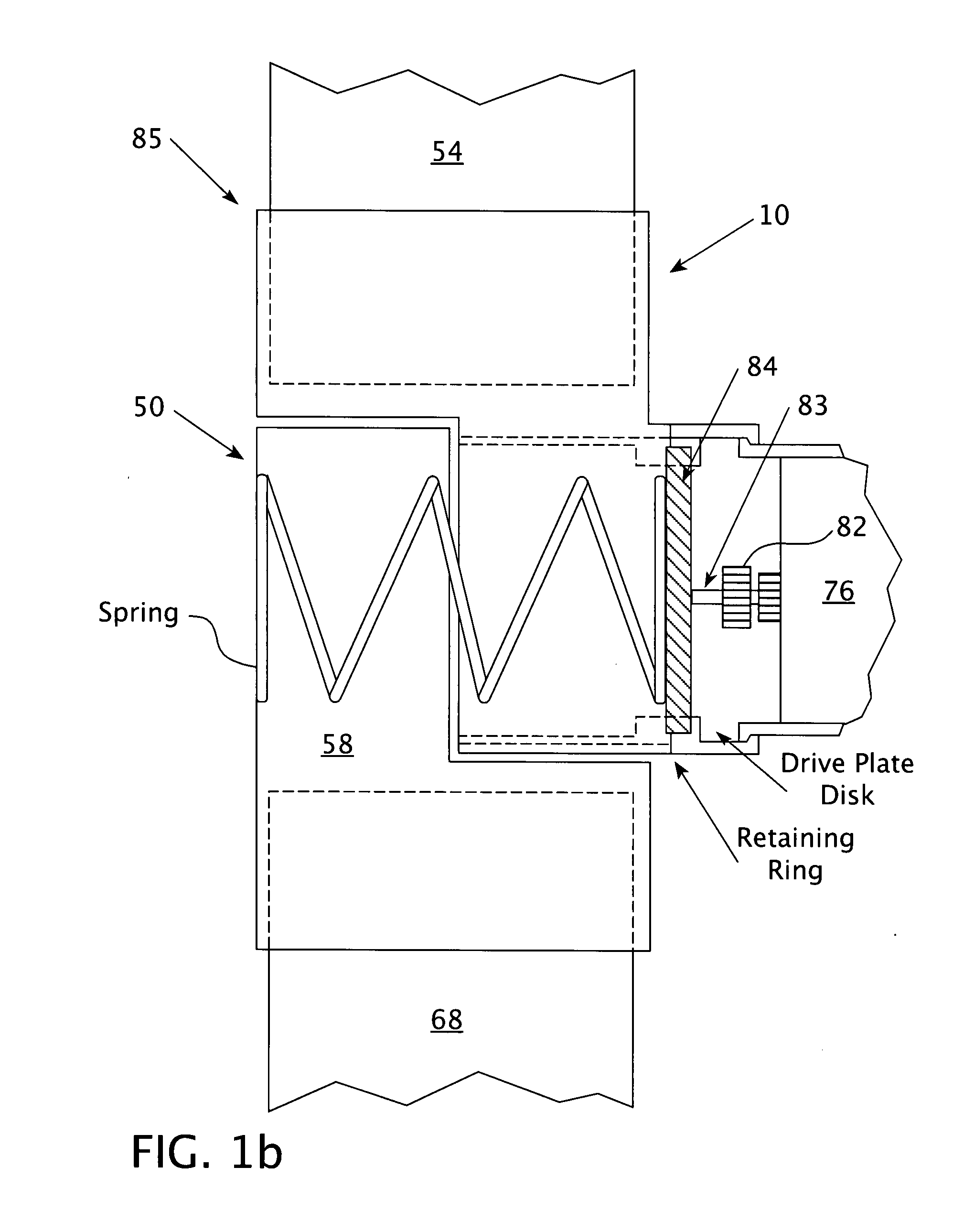Electromechanically driven external fixator and methods of use
a fixator and electronic technology, applied in the field of surgical orthopedic instruments and to the external fixation of bone fractures, can solve the problems of not being able to be progressively adjusted, requiring a significant amount of expertise and management, and no web based software program that can be used
- Summary
- Abstract
- Description
- Claims
- Application Information
AI Technical Summary
Problems solved by technology
Method used
Image
Examples
Embodiment Construction
[0027]As described herein below, the term “positioning” is also meant to expressly address the need for subsequent bone “re-positioning” as well. And, while repeated references are made to uses to repair fractured bone by the methods and apparatus of this invention, it should be equally understood to address beyond “broken bone” repairs, the possibilities for both mal-union and non-union, or as a slow bone correcting device. (i.e. the purposeful correction of misaligned or non-healed bones). The deformity of the bone would be an independent variable, and its correction would be such to place it in an anatomic or mechanical axis. The gradual correction would occur in multiple planes and be driven by the coordinated movements of each electromechanical component. In addition, using the same electromechanical elements, the external fixator can be used for intentional compression to stimulate partially healed bone. Furthermore, in the event of missing sections of bone, the device can be ...
PUM
 Login to View More
Login to View More Abstract
Description
Claims
Application Information
 Login to View More
Login to View More - R&D
- Intellectual Property
- Life Sciences
- Materials
- Tech Scout
- Unparalleled Data Quality
- Higher Quality Content
- 60% Fewer Hallucinations
Browse by: Latest US Patents, China's latest patents, Technical Efficacy Thesaurus, Application Domain, Technology Topic, Popular Technical Reports.
© 2025 PatSnap. All rights reserved.Legal|Privacy policy|Modern Slavery Act Transparency Statement|Sitemap|About US| Contact US: help@patsnap.com



